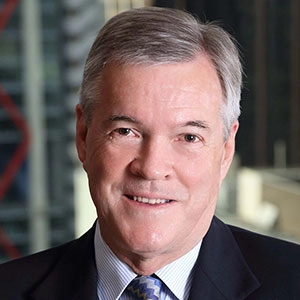The Fed must ignore Trump's monetary policy meddling
Spare a thought for Fed chief Jerome Powell who has to deal with a president who knows everything and listens to nobody.
Mentioned: Netwealth Group Ltd (NWL), Viva Energy Group Ltd (VEA), PIMCO Australian Bond W (10881), PIMCO Global Bond W (10883), AGL Energy Ltd (AGL), Bendigo and Adelaide Bank Ltd (BEN), BHP Group Ltd (BHP), Goodman Group (GMG), Macquarie Group Ltd (MQG), Origin Energy Ltd (ORG), Platinum Asset Management Ltd (PTM), Ramsay Health Care Ltd (RHC), Rio Tinto Ltd (RIO), Technology One Ltd (TNE), TPG Telecom Ltd (TPG), Whitehaven Coal Ltd (WHC)
US equities markets are currently responding to strong June quarter earnings reports. Expectations are for S&P 500 earnings per share to be up over 20% year-on-year. While important, these earnings are now historical. Forward-looking comparisons are likely to be more subdued as the effect of recently introduced tariffs on world trade become a reality.
Donald Trump’s unorthodox negotiating tactics and regular critical tweets can unnerve global financial and currency markets. Confidence in the Trump administration, filled to overflowing with “yes” personnel led by the Secretary of the Treasury Steven Mnuchin and Director of the National Economic Council Larry Kudlow, is on the wane. Few, if any White House discussions would be conducted based on thoughtful disagreement.
The previously off-limits Federal Reserve has been targeted, with the president tweeting he was “not thrilled” with recent rate hikes. Given his business empire is highly leveraged, I can understand his angst. While freedom of speech is a right, few of Trump’s predecessors have trodden this path. The independence of the country’s central bank is normally off-limits to politicians. Although this is far from a normal administration.
Jerome Powell was Trump’s choice as the person to replace Janet Yellen as chair of the Federal Reserve (the Fed). Now he is yelling at Powell and I’m sure Yellen is now glad to be on the side lines. The president’s massive unfunded fiscal policy is the driving force behind a rising interest rate environment in the US. It is clashing with the need to normalise monetary policy and rein in the Fed’s bloated balance sheet. If he and his advisers don’t understand the situation, heaven knows what might be in store down the track.
As the interest rate differential being created by higher US bond yields widens, so the US$ appreciates against other currencies – Currency 101. Yes, the People’s Bank of China (PBOC) has intervened and set the yuan cross rate lower. But this is part of a combined retaliation to Trump’s threats to widen the US tariff net to US$500bn, effectively placing tariffs on all Chinese imports. A lower yuan makes Chinese exports cheaper and more competitive in global markets, offsetting to some degree the effect of increased tariffs. Despite accusations and tweets, there is no evidence the European Central Bank has been manipulating the euro.
Given the seven-year monetary picnic the world has enjoyed, the US government should now be responding by reducing expenditure and targeting a surplus, not going on a debt-funded binge of trillions. But how do you tell someone - who knows everything, listens to no one, and just happens to be president - of the inherent dangers of the policy, without getting fired?
Powell has made his position very clear, recently telling a congressional committee, “US fiscal policy has been on an unsustainable path for some time. It continues to be unsustainable”. He will do well to ignore the president’s tweets. Should June quarter GDP growth get near a predicted annualised 4%, watch for Powell’s talons to become more exposed, particularly as inflationary pressures are clearly mounting.
Westpac’s chief economist Bill Evans has suggested the Fed will lift rates four times between now and June 2019 with range at 2.75%-3.00% from the current 1.75%-2.00%. He suggests this will signal the end of US monetary policy tightening. I am not so sure. It does not provide the Fed with much ammunition for when it may next be required to ease, some suggesting as early as 2020, with the US economy then potentially in recession.
Just how big is China’s corporate debt iceberg?
In the Year of the Dog, the dogs are yelping and bankers and bond holders howling. As authorities try to rein in credit, 2018 is likely to break default records, placing the Chinese banking system under meaningful pressure.


